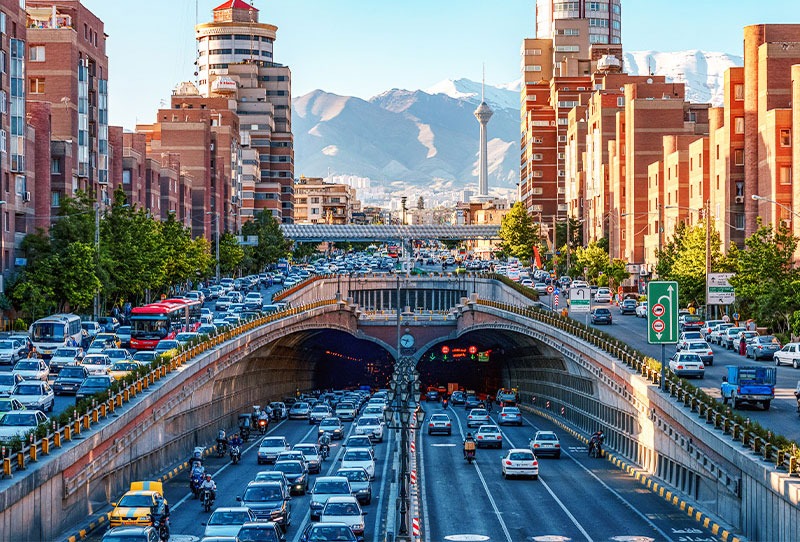
TRAVEL GUIDE OF TEHRAN, CAPITAL OF IRAN
Explore Tehran, the vibrant capital of Iran, where history, culture, and modernity converge in a captivating blend. Nestled between majestic mountains and vast desert regions on the southern slopes of Alborz, Tehran boasts a unique setting at an elevation of 1190 meters. Once a humble village, it emerged into prominence, particularly during the Qajarid era. The towering Tochal peak influences the inviting climate, standing tall at 3950 meters. Join us on a journey through Tehran’s rich past and present, uncovering architectural wonders and diverse attractions that continually captivate visitors worldwide.
Let’s explore the vibrant story of Iran’s capital: Tehran.
During King Nasseraddin’s era, Tehran experienced a golden age of architectural brilliance, giving rise to awe-inspiring structures that still captivate us today. From the enchanting Golestan Garden with its splendid palaces to the graceful Sahib Qaraniyeh, the lavish Ferdwos, the regal Shams-ol Emareh Edifice, and the bustling Marvi Bazaars, each stood as a testament to the city’s magnificence. Old houses were replaced by new apartments, embracing urbanization. This not only changed the buildings but also how life works in Tehran.
Today, Tehran is a dynamic hub, Iran’s largest city divided into 22 sections. Globally, it’s 125th in size and 28th in population. Known for politics, economics, culture, and geography, Tehran attracts various pursuits.
Tehran has been a key hub of economic, human, and social capital for two centuries in Iran. Since the Constitutional Revolution, the city has experienced remarkable growth, making it stand out in the Middle East. Tehran’s Bazaars, located along 15 Khordad Avenue, are vibrant historical landmarks hosting treasures like the Imam Mosque and the Friday Mosque. The towering Azadi Tower, blending pre-Islamic and post-Islamic architectural elements, serves as a symbol of urban identity. Meanwhile, attractions like Imamzadeh Dawood, Niyavaran Palace-Museum, Darabad’s Wildlife and Natural Museum, and the delightful Eram Park continue to attract visitors.
Climate of Tehran

Tehran boasts over 800 well-maintained parks, making it a city of greenery. Situated nearly a mile above sea level, it enjoys a cooler climate compared to other Middle Eastern cities. Several factors contribute to Tehran’s appeal: the consistently cool and dry climate, the proximity of mountains, blooming flowers in parks and gardens year-round, tree-lined avenues and streets, and water flowing down from the upper city through deep gutters resembling small rivers in spring.
Tehran has a semi-arid climate with four distinct seasons, making it a year-round destination depending on your preferences.
Summers are hot and dry, with daytime temperatures between 30°C (86°F) and 40°C (104°F). Nights are somewhat cooler but still warm. Autumn offers mild and pleasant weather, perfect for outdoor activities, with daytime temperatures ranging from 15°C (59°F) to 25°C (77°F).
Winters are cold, especially at night, with occasional snowfall and temperatures dropping below freezing. This season attracts skiers to nearby mountain resorts.
Spring is the best time to visit, featuring mild temperatures, blooming flowers, and ample sunshine. Daytime temperatures vary from 10°C (50°F) to 20°C (68°F).
Tehran’s transportation

Navigating Tehran’s traffic can be challenging, but taxis are a reliable option, although a bit more expensive than in other parts of the country.
You can also use the extensive local bus network to reach almost any destination, provided you understand the routes and Persian line numbers.
The standout transportation option in Tehran is the recently built metro system.
Tehran Bus Services

Tehran’s Bus Rapid Transit (BRT) system is a reliable and popular mode of transportation in Iran. Women often prefer buses, considering them safer than taxis. While buses operate throughout the city, specific timetables and routes may not be readily available.
Bus stops, especially along Vali Asr Street, are well-marked and plentiful. If needed, you can ask a passerby for the nearest stop.
Daytime bus services are frequent, but they become more sporadic in the evenings (some buses stop running after 21:30) and on Fridays.
Make sure to purchase a ticket either at the kiosk or directly from the driver, paying at the end of your journey.
Female travelers may be required to exit the bus and approach the driver at the front to pay for the ticket
Tehran BRT Bus System

The Tehran Bus Rapid Transit (BRT) system, established in 2008, serves Tehran with a network spanning over 150 kilometers, catering to 1.8 million daily passengers.
With ten lines currently in operation and plans for expansion, the total length is expected to reach 300 kilometers. As of 2023, the fare for regular and express buses starts at 1,800 Iranian Rials (IRR) for the initial 2.5 kilometers, with an additional charge of 400 IRR for every extra 2.5 kilometers.
For convenience, BRT tickets are available as prepaid, rechargeable cards integrated with the Tehran Metro system. To obtain these electronic, credit-based tickets, you can visit the ticket sales booths at metro stations.
Recharging your BRT ticket is a straightforward process. While the booths may experience crowds, it’s advisable to use the machines within metro stations for a quicker experience. These machines accept bank credit cards for easy reloading. Additionally, you’ll find machines at the entrances of BRT stations for ticket recharging.
Tehran Metro services

Tehran’s metro, launched in 2000, has five lines connecting different parts of the city. A one-way trip costs 3,500 rials, and a return journey costs 5,500 rials, regardless of the distance.
For budget-friendly travel, consider using integrated travel passes, similar to London’s Oyster card. Get a card, load it with funds, and swipe in and out at station barriers for convenient regular train use.
Avoid rush hours (06:00-09:00 and 13:00-17:00). The carriages are gender-segregated, and signs are in Persian and English for a safe and efficient journey.
Though not as frequent as European metros, Tehran’s metro carriages are clean, and you can buy snacks from vendors along the way.
Check out and download the Tehran Metro map PDF for reference.
Tehran Taxi services

Getting around Tehran by taxi is simple and affordable. A shared taxi (savari) typically costs between 250,000 to 1,000,000 rials, while a private hire (darbast) can go up to 1,800,000 rials, depending on your destination.
Keep in mind that Tehran isn’t very pedestrian-friendly, so opting for a short Savari ride along Valiasr Street can save you a lot of energy.
Exploring Tehran with Rideshare Apps
For a cost-effective option, travelers are advised to use rideshare apps like SNAPP or TAP30, as they are often cheaper than regular taxis.
Getting Familiar with Tehran’s Airports
Tehran has two airports – Imam Khomeini International Airport, mainly for international flights, and Mehrabad Airport, typically used for domestic travel.
Imam Khomeini International Airport (IKA)

Getting to and from Tehran’s Imam Khomeini International Airport (IKA) can vary in duration based on transportation mode, traffic, and specific departure locations in Tehran. Here are estimated travel times to some important places:
IKA to Azadi Stadium (West Tehran)
By car: 45 minutes to 1 hour (longer during peak traffic).
By public transport: No direct line; involves metro and shuttle or taxi (1.5 to 2 hours).
IKA to Tehran City Theater (Central Tehran)
By road: 1 to 1.5 hours, subject to traffic conditions.
By public transport: No direct line; involves metro and other transport (1.5 to 2 hours).
IKA to Lavizan Forest Park (North Tehran)
By car: 1 to 1.5 hours.
By public transport: Involves multiple modes, taking around 2 hours or more.
IKA to Milad Tower (North-central Tehran)
By car: 1 to 1.5 hours.
By public transport: No direct line; involves metro and shuttle or taxi (1.5 to 2 hours).
IKA to Espinas Palace Hotel (Northwest Tehran)
By car: 1 to 1.5 hours.
By public transport: No direct line; involves metro and shuttle or taxi (1.5 to 2 hours).
IKA to Parsian Esteghlal Hotel (North Tehran)
By car: 1 to 1.5 hours.
By public transport: No direct line; involves metro and transfer (1.5 to 2 hours).
IKA to Ferdowsi Hotel (Central Tehran)
By car: 1 to 1.5 hours (traffic dependent).
By public transport: No direct line; involves metro and other transport (1.5 to 2 hours).
IKA to Qom City Center
By car: 1.5 to 2 hours (about 125 km south of Tehran).
By public transport: No direct route; bus or train to Tehran, then transfer (3 hours or more).
Mehrabad International Airport

Mehrabad International Airport, operational since 1938, once served as Tehran’s main airport for both domestic and international flights. While its international role has diminished with the rise of Imam Khomeini International Airport, Mehrabad remains a vital hub for domestic travel within Iran.
For travelers arriving from abroad or journeying within the country, both airports provide essential services and amenities.
Distance and Travel Time from Mehrabad International Airport to Tehran City Center:
Distance: Approximately 10 to 12 kilometers, depending on the specific city center destination.
By Car:
Without traffic: About 20-30 minutes.
With traffic (especially during peak hours): 40 minutes to over an hour.
By Public Transport:
Metro Station: Mehrabad Airport Station on Line 4 of Tehran’s metro system connects the airport to the city center.
Travel Time: Using the metro, it takes around 30-40 minutes to reach the city center. However, considering the potential waiting times for the next train, the total journey could be a bit longer.
Tehran Train Station:

established in 1927, serves as a central transportation hub easily accessible by metro and bus. It connects Tehran to various major cities, including Mashhad, Ahvaz, Tabriz, and Bandar Abbas. With proximity to Mehrabad Airport (13 km) and Imam Khomeini International Airport (45 km), the station offers convenient transitions between air and rail travel. Purchase your Iran train tickets effortlessly through the OrientTrips website, ensuring a smooth and efficient travel experience, whether exploring the city or venturing across Iran.
Exploring Tehran Bus Terminals
- Azadi Terminal (West Tehran)
Azadi Terminal, inaugurated in 1996, stands as one of Tehran’s largest and busiest terminals. The second floor accommodates administrative offices, while the first floor is the ticketing hub for destinations like Ilam, Rasht, Kermanshah, Ardebil, Saveh, Shiraz, Mashhad, Sanandaj, Yazd, and international locations such as Istanbul, Batumi, Tbilisi, and Ankara.
Location: [Azadi Terminal on Google Maps]
- Tehranpars Terminal (East Tehran)
Established in 1981, Tehranpars Terminal is a prominent transportation hub in Tehran. Serving as a departure and arrival point, it facilitates travel to cities like Mashhad, Gorgan, Isfahan, Qom, Babol, Arak, Semnan, Amol, and more.
Location: [Tehranpars Terminal on Google Maps]
- Khazaneh Terminal (South Tehran)
Khazaneh Terminal, operational since 1974, is the oldest among Tehran’s terminals. It serves passengers traveling from southern cities, including Bushehr, Abadan, Isfahan, Khorramabad, Dezful, Shiraz, Shushtar, Hamedan, Yasuj, Shahroud, Asaluyeh, Arak, Semnan, Ardebil, Andimeshk, Ahvaz. It also offers routes to Turkey and Syria.
Location: Khazaneh Terminal on Google Maps
- Beyhaghi Terminal (Argentin Square)
Beyhaghi Terminal, inaugurated in 1991 at Argentin Square, provides bus tickets to cities like Rasht, Shahr-e Kord, Hamedan, Yazd, Chalus, Shabestar, Urmia, Ahvaz, among others, facilitating travel to these destinations.
Location: Beyhaghi Terminal on Google Maps
- Poonak Terminal
Poonak Terminal, located in the Poonak neighborhood, is the last on our list. With various travel agencies housed here, it’s a convenient choice for those planning trips to northern Iran. The terminal offers a waiting area where you can relax while awaiting your journey.
Location: Poonak Terminal on Google Maps
These five terminals play a crucial role in connecting travelers to Iran’s diverse regions. Whether you’re after the historic charm of Isfahan, the lush greenery of Gilan, or the ancient wonders of Shiraz, these terminals will set you on your way.
For more information about traveling in Tehran and throughout Iran, explore our tours of Iran website for the latest updates and travel tips.
How to get to Tehran
Tehran, the vibrant capital of Iran, offers diverse experiences for travelers, but navigating its size and traffic can be a challenge. This guide provides travel tips for a hassle-free journey.
Traveling to Tehran by Air
Flying is a quick and convenient option to reach Tehran, served by Imam Khomeini International Airport and Mehrabad Airport. However, if you’re closer or in neighboring provinces, alternative transportation may be more cost-effective.
Approximate durations of flights to Tehran from various cities:
Tabriz to Tehran: Approx. 1 hour
Isfahan to Tehran: Approx. 1 hour
Shiraz to Tehran: Approx. 1 hour and 30 minutes
Mashhad to Tehran: Approx. 1 hour and 30 minutes
Bandar Abbas to Tehran: Approx. 1 hour and 45 minutes
Traveling to Tehran by Train
Train travel offers an enjoyable journey to Tehran, with the central Tehran Railway Station serving as a hub.
Approximated train journey durations to Tehran from diverse cities:
Isfahan to Tehran: Approx. 8 to 9 hours
Mashhad to Tehran: Approx. 10 to 12 hours
Tabriz to Tehran: Approx. 12 hours
Shiraz to Tehran: Approx. 15 to 16 hours
Bandar Abbas to Tehran: Approx. 18 to 20 hours
Journeying to Tehran via Bus
For a budget-friendly option, consider traveling to Tehran by bus, with several major terminals connecting to destinations across Iran.
Estimated bus travel times to Tehran from different cities:
Isfahan to Tehran: Approx. 4 hours and 50 minutes to 5 hours
Tabriz to Tehran: Approx. 7 to 8 hours
Shiraz to Tehran: Approx. 10 to 11 hours
Mashhad to Tehran: Approx. 11 to 12 hours
Bandar Abbas to Tehran: Approx. 14 to 15 hours
Traveling to Tehran via Personal Vehicle
For flexibility, many choose to drive to Tehran, allowing exploration at their own pace.
Estimated travel times by personal vehicle to Tehran from different cities:
Isfahan to Tehran: Approx. 4 hours and 50 minutes to 5 hours
Tabriz to Tehran: Approx. 7 to 8 hours
Shiraz to Tehran: Approx. 10 to 11 hours
Mashhad to Tehran: Approx. 11 to 12 hours
Bandar Abbas to Tehran: Approx. 14 to 15 hours
Note: These times are approximate and may vary based on factors like road conditions and traffic. Tehran offers diverse experiences for travelers eager to explore its vibrant culture and history.
Exploring Tehran’s Highlights
For those looking to uncover Tehran’s gems, here’s a guide to its must-see attractions.
Golestan Palace:

Built in the late 1700s during the Qajar Dynasty, Golestan Palace stands as a luxurious World Heritage Site. The focal point is a meticulously landscaped garden with serene pools. The structures you see today mostly originate from the 19th century, showcasing a captivating fusion of traditional Persian architecture with Western and Russian influences. These palace buildings, among Tehran’s oldest, are hailed as masterpieces of the Qajar era.
National Museum of Iran:

Discover a rich history at the National Museum of Iran, home to an extensive collection featuring ceramics, stone figures, and carvings dating as far back as the 5th millennium BC. These artifacts, excavated from sites like Persepolis, Shush, Ray, and Turang Tappé, add an extra layer of fascination, especially if you’ve explored these archaeological wonders firsthand.
Azadi Tower:

A timeless symbol of Tehran, the Azadi Tower was erected to mark the 2,500th anniversary of the Persian Empire, blending Sassanid and Islamic architecture. Whether you’re a history buff, art enthusiast, or culture seeker, Tehran offers something for everyone.
Quick Facts About Azadi Tower:
Height: About 50 meters (164 feet)
Architectural Competition: Chosen from 700 designs, Hossein Amanat’s winning design fuses traditional Persian and modern architecture.
Cultural Fusion: Reflects both traditional Iranian styles and 1960s-70s modern techniques, symbolizing Iran’s rich history and modern aspirations.
Inside the Arch: The hollow arch allows visitors to ascend for a panoramic view of Tehran.
Tower Dimensions: The base covers about 45,000 square feet, with the main vault reaching a height of approximately 36 meters.
Monumental Occasion: Inaugurated in October 1971 for the 2,500th anniversary of the Persian Empire, attracting global dignitaries.
Cultural Reference: Featured in films, documentaries, and literature, emphasizing its cultural and symbolic significance.
Place of Gathering: The square surrounding Azadi Tower has hosted various events, from celebrations to protests, shaping Iran’s socio-political landscape.
Tehran Grand Bazaar:

Indulge in the vibrant atmosphere of Tehran’s Grand Bazaar. From spices to carpets, it’s a treasure trove for shopping enthusiasts.
Tabiat Bridge: Where Nature Meets Design

or the Nature Bridge lives up to its name with a unique steel-tree design. Surrounded by charming parks on either side, this bridge provides panoramic views, inviting restaurants, cozy tea houses, and even an ice cream parlor. It’s an ideal spot for a relaxed stroll and a bit of people-watching.
Niavaran Palace Complex:
Niavaran Palace showcases Persian architecture and served as the residence of the last Shah. Wander through its opulent halls and scenic gardens.
Sa’dabad Complex:

Once the venue for the Pahlavi Dynasty’s coronations and weddings, Saadabad Palace witnessed historical moments, including the last Shah’s departure during the 1979 Islamic Revolution. Transformed into a museum, it showcases a diverse collection of period furniture, decor, and personal belongings that once belonged to the last Shah.
Tajrish Bazaar:
Experience local life at Tajrish Bazaar. Stroll through its narrow alleys, savor local treats, and shop for authentic souvenirs.
Milad Tower:

Known as Tehran Tower, Milad Tower is the sixth-tallest tower globally and the 17th-tallest freestanding structure. Its soaring height of 435 meters (1,427 ft) and modern design make it a captivating feature in Tehran’s skyline.
Quick Facts About Milad Tower:
Height: 435 meters (1,427 ft)
Completion Date: 2007
Location: Between the Shahrak-e Gharb and Gisha districts of Tehran
Function: Multipurpose – Observation, Telecommunication, Restaurant, Museum, and more.
Darband:
For a nature escape, head to Darband. A picturesque hiking trail with charming teahouses awaits, offering a refreshing break from the city.
This guide ensures you make the most of your visit, capturing Tehran’s cultural, historical, and natural wonders.
Unmissable Activities in Tehran
Tehran, Iran’s vibrant capital, invites travelers to a variety of exciting activities and attractions. Whether you’re into thrilling ski adventures or exploring historical bazaars, Tehran has something for everyone:
1. Tochal Ski Resort

Location: Tochal Peak
Nestled on Tochal Peak, Tochal Ski Resort promises an exhilarating skiing experience. Despite historical events limiting its size, the active ski piste on the peak provides fantastic skiing opportunities. Recognized as an ‘International Ski Resort,’ it hosts various international snowboarding competitions.
2.Darbandsar Ski Resort

Situated in Darbandsar Village, approximately 60 kilometers northeast of Tehran.
Founded by retired professional skiers in 1982, Darbandsar Ski Resort is a private company-run destination. Located in the serene Darbandsar village, it offers a peaceful environment for skiing away from the city’s hustle and bustle.
3. Dizin Ski Resort

Location: North of Tehran
As Iran’s most significant ski destination, Dizin Ski Resort holds the distinction of being the first in the country recognized by FIS as an International Ski Resort. Whether you’re a seasoned skier or a beginner, Dizin provides excellent slopes and stunning views.
4. Shemshak Ski Resort

Position: Shemshak Village, situated 57 kilometers northeast of Tehran.
Situated in Shemshak village, this resort offers a unique blend of adventure and relaxation. With two hotels, four restaurants, and altitudes ranging from 2550 m to 3050 m, Shemshak caters to both athletes and nature lovers.
Hiking on Darakeh Mountain Route
5. Location: Darakeh

For a nature break, the Darakeh Mountain Route offers a scenic hiking trail alongside a stream, surrounded by open-air restaurants. To reach Darakeh, contemplate utilizing a taxi or minibus departing from Tajrish Square. Perfect for outdoor enthusiasts looking to escape the city.
Discover Comfortable Stays in Tehran
If you’re in search of a comfortable stay in Tehran, we’ve curated a list of top accommodation options for you. Easily explore and book through the OrientTrips website, receiving your hotel voucher instantly. Here are some top choices:
Top 5-Star Hotels:
Espinas Palace Hotel
Address: No. 33, 56th Alley, Alvand Street, Tehran, Iran.
Highlights: Luxury and elegance, panoramic views, indoor pool, spa, fine dining.
Parsian Azadi Hotel
Location: Evin Intersection, Chamran Highway, Tehran, Iran
Highlights: Traditional Iranian hospitality, modern luxury, proximity to the Exhibition Center, and diverse gastronomic experience.
Tehran Homa Hotel
Location: No. 51, Shahid Khodami St, Tehran, Iran
Highlights: Serene atmosphere, excellent service, outdoor swimming pool, sauna, fine dining.
Remis Airport Hotel Tehran
Location: Opposite Terminal 1, IKIA, Tehran, Iran
Highlights: Conveniently located, modern design, fitness center, diverse culinary offerings.
Esteghlal Hotel
Location: Crossroad of Chamran Highway & Valiasr St, Tehran, Iran
Highlights: Oldest and most famous luxury hotel, near business districts, various restaurants, fitness center, spa.
Parsian Englebal Hotel
Location: 32 Baharestan Square, Tehran, Iran
Highlights: Modern and traditional design, elegant ambiance, swimming pool, sauna, Persian cuisine.
Wisteria Hotel
Location: Darband Street, Tehran, Iran
Highlights: Unique luxury hotel, northern Tehran, stunning views, spa treatments, indoor swimming pool, fine dining.
Top 4-Star Hotels:
Ferdowsi International Grand Hotel
Location: No.24, Kooshk Mesri St., Ferdowsi Ave., Tehran, Iran
Highlights: Central location, easy access to shopping centers, swimming pool, gym, diverse dining options.
Howeyzeh Hotel
Location: Nejatollahi St, Tehran, Iran
Highlights: Central and affordable, fitness center, free WiFi, in-house restaurants with Iranian and international cuisines.
Tehran Grand Hotel
Location: Valiasr Square, Tehran, Iran
Highlights: Well-equipped 4-star, modern amenities, near the business district, business center, gym, and various restaurants.
Niloo Hotel
Location: Ostad Nejatollahi St, Tehran, Iran
Highlights: Quiet neighborhood, cozy ambiance, fitness center, café, in-house restaurant serving Persian cuisine.
Parsian Kowsar Hotel
Location: Valiasr St, Tehran, Iran
Highlights: Blend of Iranian hospitality and modern amenities, near Valiasr Street, comfortable rooms, diverse dining options.

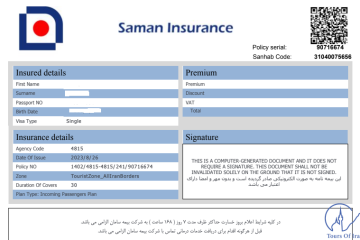
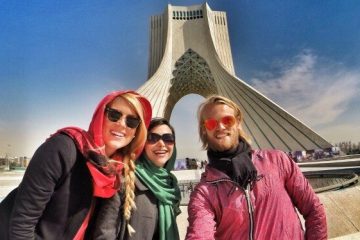
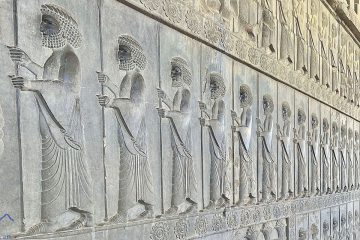
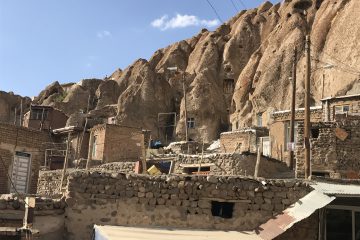
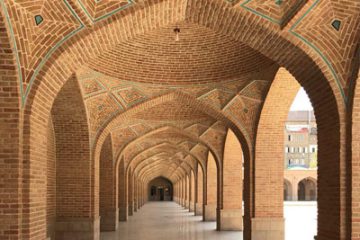
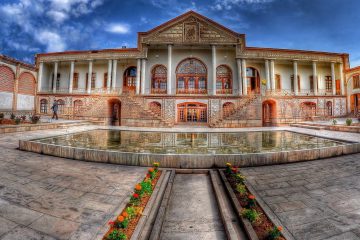
Wow